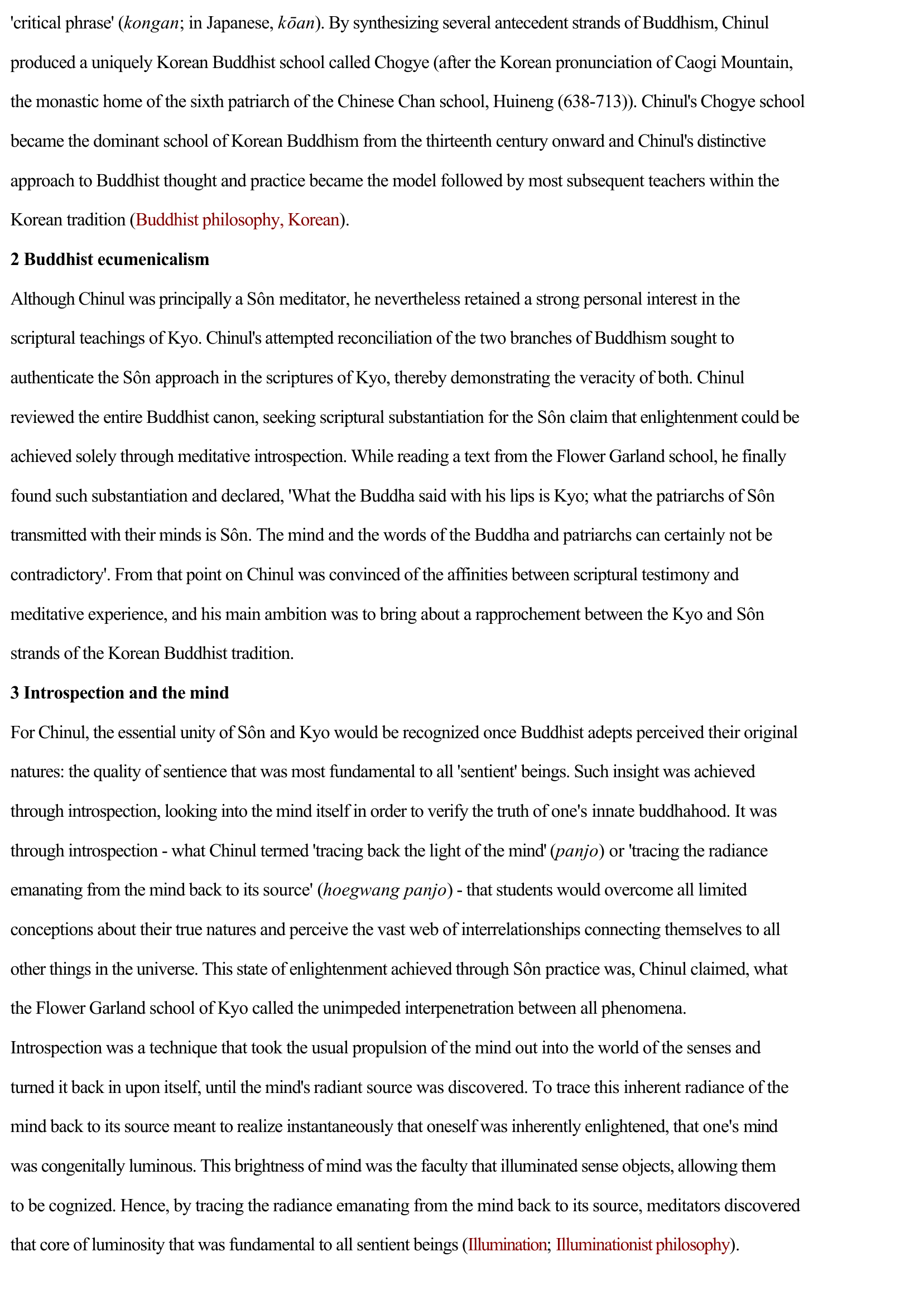Chinul
Publié le 22/02/2012

Extrait du document
«
'critical phrase' (kongan ; in Japanese, kōan ).
By synthesizing several antecedent strands of Buddhism, Chinul
produced a uniquely Korean Buddhist school called Chogye (after the Korean pronunciation of Caogi Mountain,
the monastic home of the sixth patriarch of the Chinese Chan school, Huineng (638-713)).
Chinul's Chogye school
became the dominant school of Korean Buddhism from the thirteenth century onward and Chinul's distinctive
approach to Buddhist thought and practice became the model followed by most subsequent teachers within the
Korean tradition ( Buddhist philosophy, Korean ).
2 Buddhist ecumenicalism
Although Chinul was principally a Sôn meditator, he nevertheless retained a strong personal interest in the
scriptural teachings of Kyo.
Chinul's attempted reconciliation of the two branches of Buddhism sought to
authenticate the Sôn approach in the scriptures of Kyo, thereby demonstrating the veracity of both.
Chinul
reviewed the entire Buddhist canon, seeking scriptural substantiation for the Sôn claim that enlightenment could be
achieved solely through meditative introspection.
While reading a text from the Flower Garland school, he finally
found such substantiation and declared, 'What the Buddha said with his lips is Kyo; what the patriarchs of Sôn
transmitted with their minds is Sôn .
The mind and the words of the Buddha and patriarchs can certainly not be
contradictory' .
From that point on Chinul was convinced of the affinities between scriptural testimony and
meditative experience, and his main ambition was to bring about a rapprochement between the Kyo and Sôn
strands of the Korean Buddhist tradition.
3 Introspection and the mind
For Chinul, the essential unity of Sôn and Kyo would be recognized once Buddhist adepts perceived their original
natures: the quality of sentience that was most fundamental to all 'sentient' beings.
Such insight was achieved
through introspection, looking into the mind itself in order to verify the truth of one's innate buddhahood.
It was
through introspection - what Chinul termed 'tracing back the light of the mind' (panjo ) or 'tracing the radiance
emanating from the mind back to its source' (hoegwang panjo ) - that students would overcome all limited
conceptions about their true natures and perceive the vast web of interrelationships connecting themselves to all
other things in the universe.
This state of enlightenment achieved through Sôn practice was, Chinul claimed, what
the Flower Garland school of Kyo called the unimpeded interpenetration between all phenomena.
Introspection was a technique that took the usual propulsion of the mind out into the world of the senses and
turned it back in upon itself, until the mind's radiant source was discovered.
To trace this inherent radiance of the
mind back to its source meant to realize instantaneously that oneself was inherently enlightened, that one's mind
was congenitally luminous.
This brightness of mind was the faculty that illuminated sense objects, allowing them
to be cognized.
Hence, by tracing the radiance emanating from the mind back to its source, meditators discovered
that core of luminosity that was fundamental to all sentient beings ( Illumination ; Illuminationist philosophy )..
»
↓↓↓ APERÇU DU DOCUMENT ↓↓↓

































